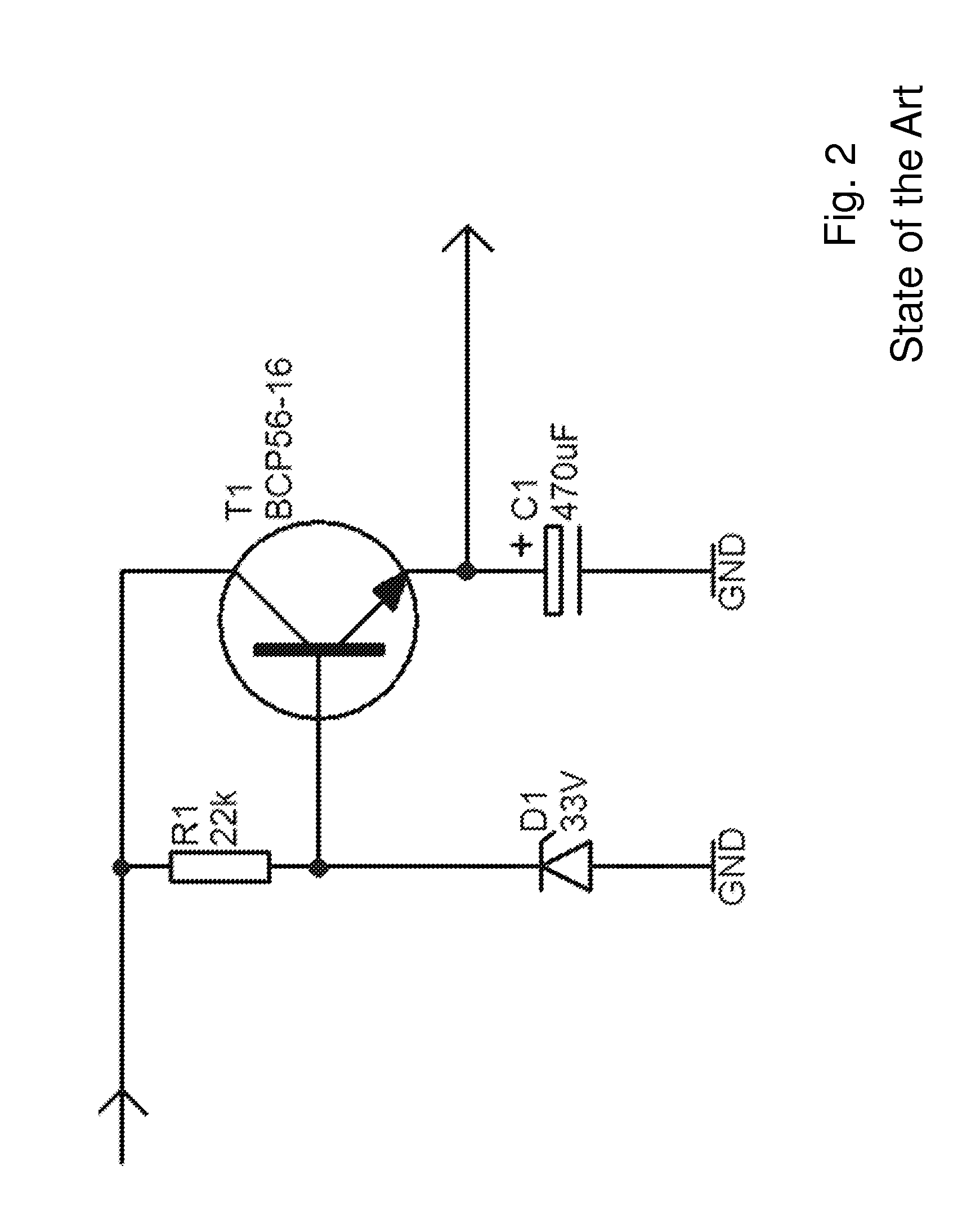Circuit for protecting an electric load from overvoltages
a technology for protecting electrical loads and circuits, applied in the direction of electric variable regulation, process and machine control, instruments, etc., can solve the problems of high power supply load, approx. voltage drop, and the risk of electrical consumers being destroyed, so as to achieve low voltage dissipation, low cost and circuit complexity, and minimal voltage dissipation
- Summary
- Abstract
- Description
- Claims
- Application Information
AI Technical Summary
Benefits of technology
Problems solved by technology
Method used
Image
Examples
Embodiment Construction
[0030]FIG. 4 shows a first embodiment of the protective circuit according to the invention. The protective circuit 1 is connected at the input 2 thereof to a voltage source, which is not included in the drawing, and is thereby supplied with a supply voltage Uin. The input 2 is connected to the drain of an n-channel MOSFET T1. The source of the MOSFET T1 is connected to the output 3 of the protective circuit 1. The gate of the MOSFET T1 is connected to the input 2 of the protective circuit 1 via a diode D2 and a resistor R1. In this manner, the gate is supplied with a voltage following the application of the supply voltage Uin, wherein the voltage is determined by the supply voltage Uin, the voltage drop across the diode D2 and the voltage drop across the resistor R1. The gate is further connected via a first Zener diode D1 to ground. The first Zener diode D1 is operated in the blocking direction, such that the gate is supplied at most with a voltage which is determined by the breakd...
PUM
 Login to View More
Login to View More Abstract
Description
Claims
Application Information
 Login to View More
Login to View More - R&D
- Intellectual Property
- Life Sciences
- Materials
- Tech Scout
- Unparalleled Data Quality
- Higher Quality Content
- 60% Fewer Hallucinations
Browse by: Latest US Patents, China's latest patents, Technical Efficacy Thesaurus, Application Domain, Technology Topic, Popular Technical Reports.
© 2025 PatSnap. All rights reserved.Legal|Privacy policy|Modern Slavery Act Transparency Statement|Sitemap|About US| Contact US: help@patsnap.com



